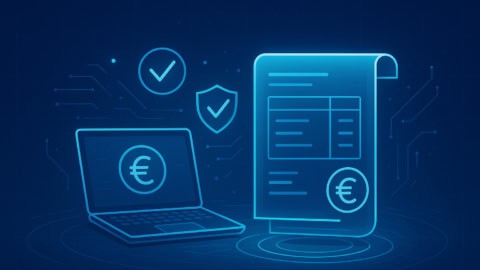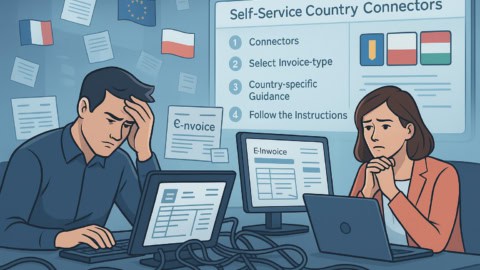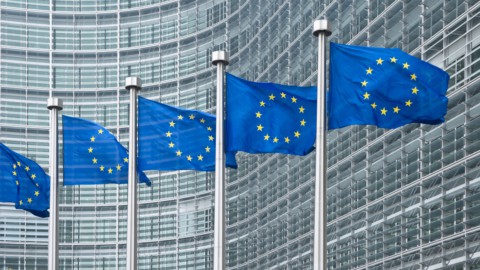Like many other European countries, Serbia has been gradually introducing e-invoicing regulations over the past few years in an attempt to boost the country’s economy and improve the transparency and efficiency of B2G and B2B transactions.
As of 1 January 2023 B2B e-invoicing became mandatory in Serbia for all Serbian businesses, plus foreign businesses operating in the country with a local fiscal representative. The new system is called Sistem e-Faktura (SeF) and is similar to the clearance model currently used in Italy.
E-invoicing in Serbia timeline
May 1 2022:
- Business required to send e-invoices to public sector customers (B2G)
- Serbian public entities must be able to receive, process and archive inbound e-invoices
- E-invoicing becomes mandatory in G2G transactions
July 1 2022:
- Serbian public entities must send e-invoices to all partners (G2G and G2B)
- Private sector entities must be able to receive, process and archive e-invoices from public sector partners
January 1 2023:
- E-invoicing mandatory for all B2B transactions
Who is affected by Serbia’s e-invoicing rules?
The new e-invoicing regulations cover all transactions (B2B, B2G, G2B and G2G). As a result, all businesses and government bodies operating in Serbia must now be able to send, receive, process and store e-invoices.
Technical requirements
Document types
- Invoices
- Credit notes
EDI format
- XML (UBL 2.1) according to the Serbian CIUS of the European standard
Transmission portal
- Sistem eFaktura (SeF)
SeF requires two factor authentication or electronic certificate (obtainable via the Portal of Electronic Identification)
What happens if I don’t comply?
Those companies that fail to issue e-invoices on time or incorrectly can expect to face fines between 1,700 EUR and 17,000 EUR per instance. Additionally, company directors may face personal fines between 420 EUR and 1,270 EUR for non-compliance.
Your compliance options
For businesses operating in Serbia there are two options: handle everything in-house or enlist the help of an e-invoicing solution provider.
Handling compliance in-house
Being able to receive, process and store inbound e-invoices requires in-house software and a considerable amount of internal effort. When it comes to sending e-invoices, smaller companies can manage compliance by manually entering invoice data into the central e-invoicing portal Sistem e-Faktura (SeF). Given the effort involved and the potential for data entry errors, however, this is not an efficient approach – particularly for companies that send/receive high volumes of invoices.
Using an e-invoicing solution provider
For most companies, the most logical way to achieve compliance is to use an e-invoicing solution provider such as ecosio. Using a provider allows businesses to bypass the time-intensive process of manually inputting/extracting invoice details. Instead, the relevant data is submitted to SeF via an API connection, allowing internal teams to focus on their core responsibilities.
Selecting an e-invoicing solution provider
As e-invoicing solutions vary, it is important to ask the following questions before deciding on a provider:
Can they make e-invoicing effortless?
Unlike ecosio, not all e-invoicing providers offer a fully managed service. As a result, message exchange via some providers will require much more internal effort than with others. For this reason it is worth checking exactly what tasks will remain in house when deciding between prospective solutions.
Do they offer an API connection?
An API connection allows for invoice data to be extracted and transmitted automatically to and from your existing in-house ERP/accounting system. At ecosio our solution also provides users with end-to-end message visibility – allowing internal teams to see the status of messages (received, opened, etc.) in real time.
Are they an official Serbian e-invoicing provider?
While many companies offer e-invoicing solutions, not all will be familiar with the specifics of Serbian e-invoicing regulations or have an existing connection to the SeF portal. At ecosio we are an official Serbian e-invoicing provider. As such, we are perfectly placed to help you achieve compliance with the new regulations.
Are they a certified Peppol Access Point?
Peppol’s popularity is growing and in many countries Peppol compliance (in one form or another) is already mandatory. While Peppol compatibility is not required in Serbia, for international and growth-oriented businesses it makes sense to select a provider (such as ecosio) that is also a certified Peppol Access Point and will be able to support you here when needed.
Want more information?
At ecosio we’re experts when it comes to automated message exchange and have helped hundreds of companies to experience the benefits of e-invoicing. If you would like more information on e-invoicing in Serbia, contact us today. We’d love to help you optimise your current processes.
Are you aware of our free XML/Peppol document validator?
To help those in need of a simple and easy way to validate formats and file types, from CII (Cross-Industry Invoice) to UBL, we’ve created a free online validator.















